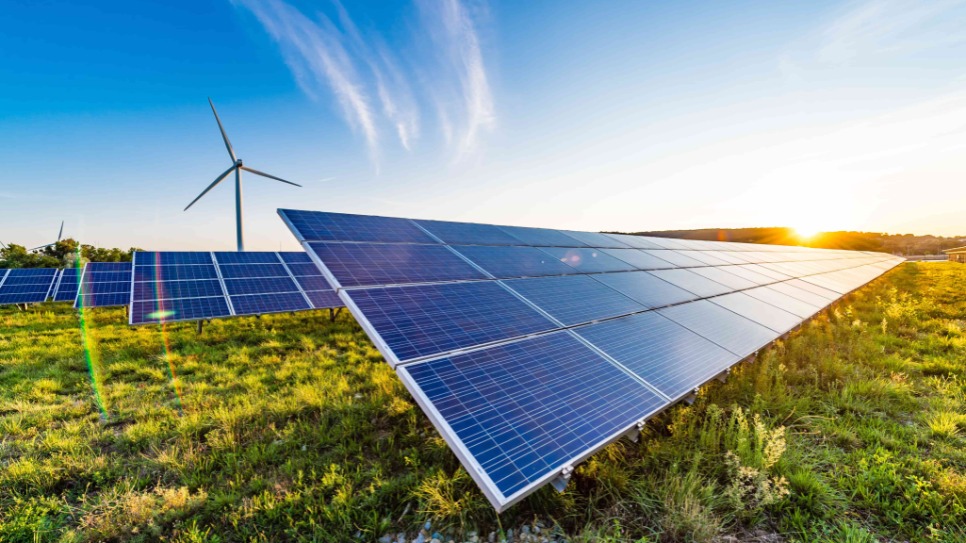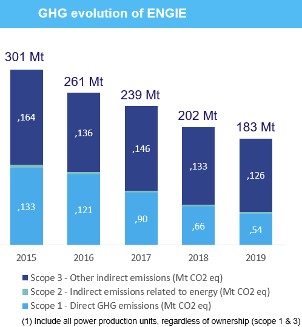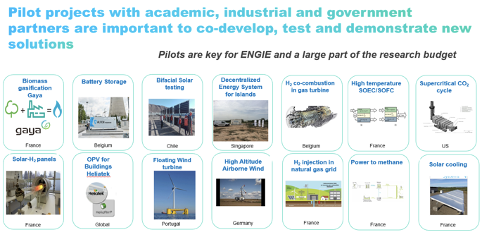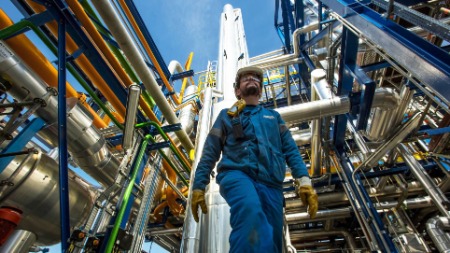News - December 11, 2020
Scaling up ambition: How a private energy company is embracing new technologies to hit net-zero


Written by Expert: Jan Mertens 5 min read
Jan Mertens is Chief Science Officer at ENGIE Research and Visiting Professor at the University of Ghent. He has been an Expert at the Solar Impulse Foundation for over two years.
Five years ago, the COP21 Paris Agreement affirmed the pledge of almost every nation that global warming should be limited to no more than 2 degrees. Five years later it is clear that we, as a society, will need to accelerate our efforts to reach this target and a lot of hope hangs in the balance of next year’s Glasgow COP26 conference to help us make progress.
We must act now to accelerate towards our goal of a carbon neutral energy transition. At ENGIE, where I am the Chief Science Officer leading the scientific department, this is a challenge which we are embracing to reduce our own carbon footprint and find new ways to do business. Just one of the ways we are doing this is by being an active partner in the Solar Impulse Foundation, where we have Experts - including myself - dedicated to the evaluation of clean and profitable Solutions. I am also a part-time visiting professor at the University of Ghent, where I teach a course on Sustainable Energy, as well as being involved in master and PhD research.
Sustainability starts at home: Tackling emissions at ENGIE
As one of the largest independent power producers, ENGIE has a responsibility to reduce our emissions to match the ambition shown in the Paris Agreement and respond to new societal and environmental needs. In 2015 when the Agreement was signed, we knew this meant we had to respond as a company. ENGIE has the largest gas infrastructure network in Europe and is the third largest gas-importing company, so challenges exist in decarbonising. As a company we’re fully committed to embracing new energy solutions and a key part of our future strategy to be a company which helps accelerate the transition towards a carbon-neutral world. But it’s not enough to just say we support changes. We want to ‘walk the talk’ as well, and we’ve so far succeeded in substantially reducing our emissions. Since 2015 we’ve made substantial progress to decarbonise our operations, reducing Greenhouse Gas (GHG) emissions by 39%, increasing our renewable power production capacity of 27GW in 2019, and having wind, solar, biomass and biogas now supply 28% of our total energy needs. This was achieved to a significant extent by the decision to phase out coal-fired power plants, as well as increasing efficiency and fuel switching towards renewables. Our ambition is now to become carbon neutral by 2050 and very recently, ENGIE obtained the Science Based Targets Certification with 2 GHG reduction commitments: Reduce the intensity of emissions of its power generation activities by 52% by 2030, and Reduce Scope 3 emissions on sold products by 34% by 2030. Looking forward, we are embracing clean hydrogen as part of the energy mix to help us cut emissions even further and meet our long-term goals.

Embracing new technologies is vital
In many energy discussions, people seem to think in opposing ideas: nuclear or gas turbines to complement intermittent renewable electricity production; electricity or gas to produce heat; Li-ion batteries or Redox flow batteries for grid stabilisation; electricity or hydrogen for mobility; biogas or synthetic natural gas, and so on. However, it is clear that we now need to move away from discussions on opposing technologies, and instead focus on where and how these technologies can complement each other in a synergetic architecture. Indeed, the International Energy Agency’s Energy Technology Perspectives 2020 (IEA, ETP 2020) report highlights how 75% of the emission reductions we as a society need to reach the targets of the Paris Agreement will have to come from a whole host of technologies that are not yet mature. This does not mean that they must be invented from scratch; rather they will need to be quickly upscaled from benchtop technologies in laboratories to pilots, then demonstrations, and finally into the market.
Examples of technologies for which this happened over the last two decades are solar photovoltaic (PV), on- and off-shore wind, and more recently also Li-ion batteries. The price of these technologies have drastically decreased as a result of their upscaling. In the near future we can expect floating wind, perovskites, Carbon Capture and Utilisation (CCU), and much more. This upscaling is exactly the mission of ENGIE’s research department, where I lead the scientific team. A large part of our effort is to help scale up technologies from laboratory to pilot and demo scale, with a final objective of the adoption of these technology by our business units and the wider market. Our department’s role in this is twofold: (i) making sure the group does not miss any upcoming emerging technologies that could impact our business and the energy transition in an important way, and (ii) setting-up R&D collaborations on these non-mature technologies with key international academics and research institutes to understand their challenges and opportunities which could potentially lead to pilots and demos.

The energy hierarchy remains vital to reach net-zero
To reach carbon neutrality by 2050, experts and companies seem to converge to the following three important pathways to reach it, and the order is important:
1. Increase the energy efficiency of all our activities and processes and thus consume less energy
2. Electrify as many processes as possible by using renewable electricity, not just in sectors like mobility but also in industrial processes wherever possible
3. Embrace hydrogen for processes where high energy density is crucial or for the storage of energy over longer time periods
For this final point, green hydrogen from renewable electricity and water will be an important energy source, and in some cases it will be used as hydrogen in mobility or industrial processes. However, due its low volumetric energy density and the challenges related to its storage and transport, using this green hydrogen in combination with CO2 to convert it to high energy dense molecules (eg. Methane, methanol) will be crucial. This is Carbon Capture and Utilisation (CCU), and aims to synthesise hydrocarbon fuels from renewable energy and CO2; sometimes referred to as e-fuels. It is clear that for CCU to be sustainable, large amounts of renewable electricity is required. Today, even more innovative solutions such as Liquid Organic Hydrogen Carriers and metal fuels are emerging, and it is very likely that these technologies will co-exist and serve to transport and store energy.
Challenges ahead, but ambition is key
It remains difficult to predict the possible impact that unexpected game-changing technologies will have on meeting the targets of the Paris Agreement. New solutions such as artificial photosynthesis, high altitude airborne wind, conversion of CO2 into fuels (biological or otherwise) and many more may yet turn out to be important in helping us a great deal on the road to carbon neutrality. Therefore investment in the development of these new technologies is crucial, and collaboration between public and private organisations is key. ENGIE is committed to developing these emerging technologies by working with others to help achieve the objectives of the Paris Agreement. What is clear is that the energy transition will not have one winner: we will need many emerging technologies, and there is no single one that has the potential to overcome this challenge alone. Likewise, the challenge is too large to overcome alone as one person, company or sector, and we must collaborate across sectors, fields of study, and international boundaries to reach our carbon-neutral goals.
ENGIE is proud to be part of the Solar Impulse Foundation to help identify and scale-up clean and profitable Solutions that have the potential to be part of a new carbon-neutral world. Nineteen ENGIE solutions have already received the Foundation's Label, covering the fields of energy efficiency, renewable energy, and infrastructure. Renewables are at the heart of the Group's ambitions for carbon neutrality, and three of these labelled solutions represent major innovations in solar energy: HeliaSol, Solarimo and Community Solar. Find more information about our nineteen labelled Solutions here!

Written by Expert: Jan Mertens on December 11, 2020


